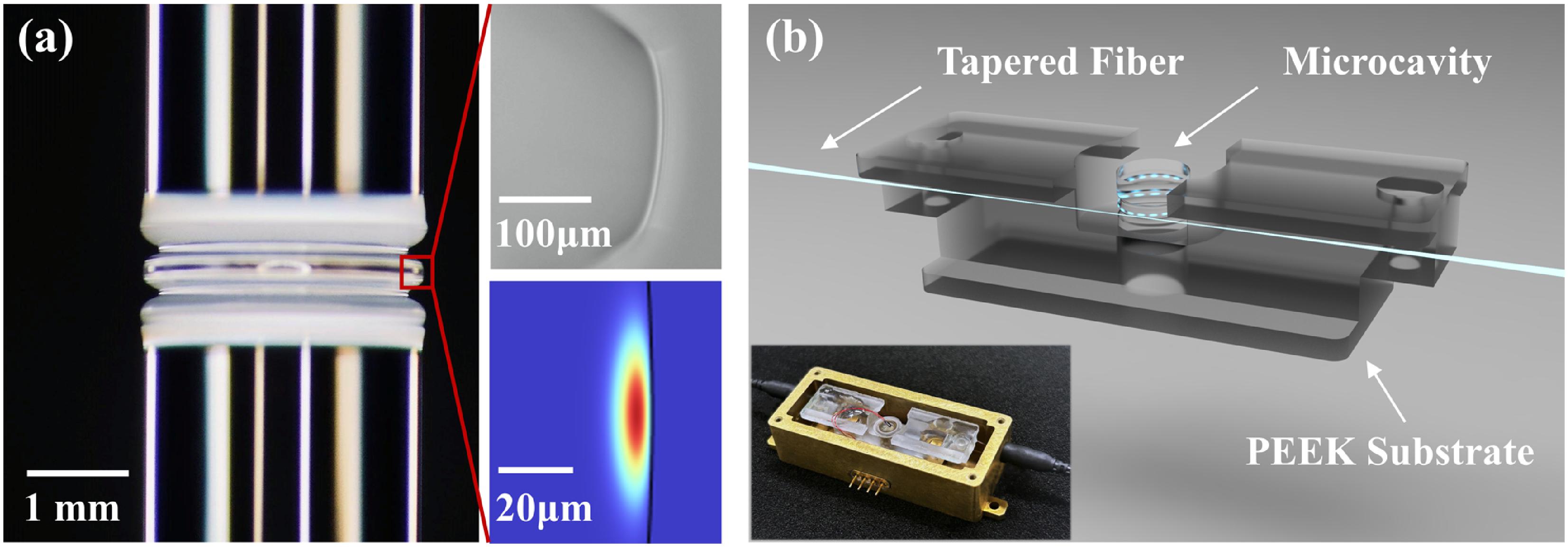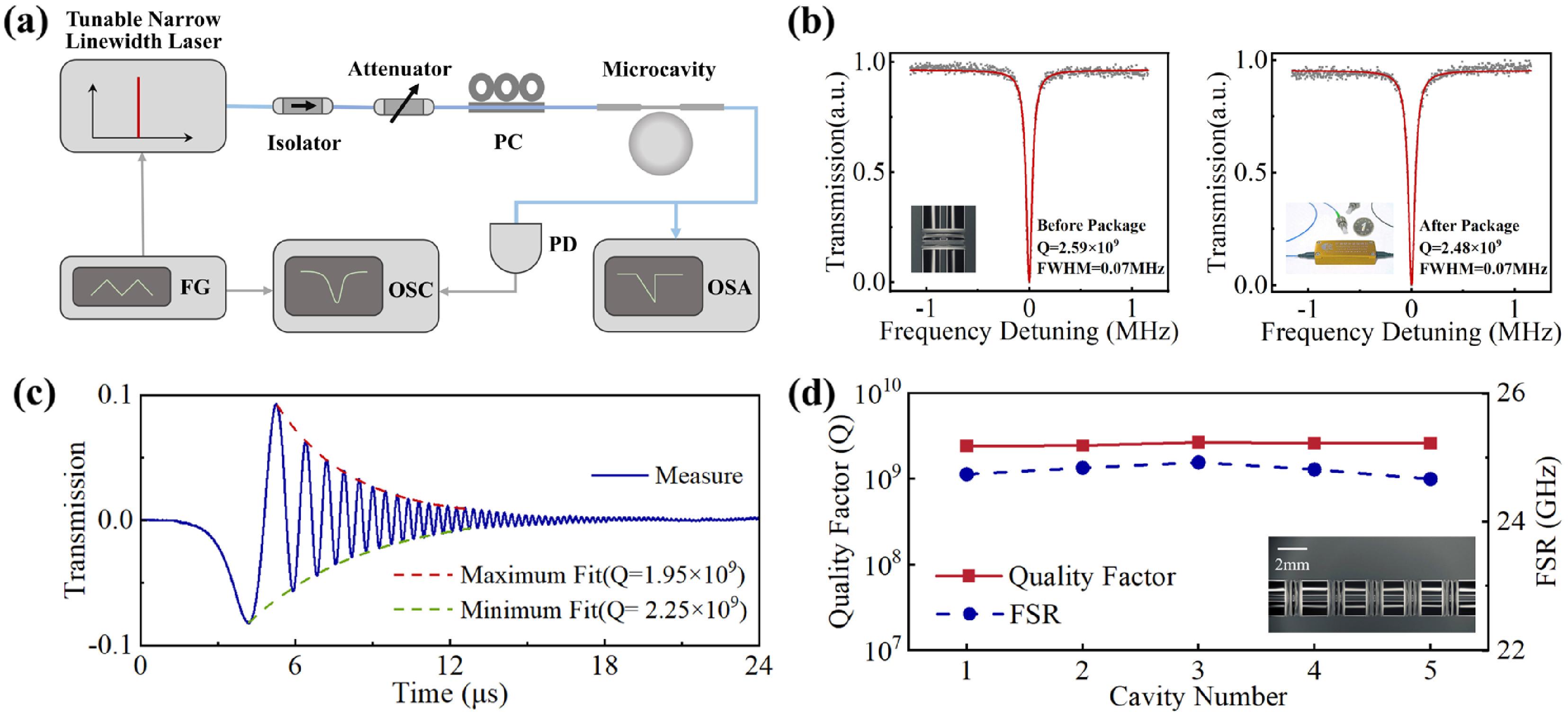Fangxing Zhang, Shengnan Huangfu, Shengqiang Ji, Yanjie Bai, Xuanyi Zhang, Zijing Cai, Tinglan Chen, Bo Ni, Bowen Ruan, Jialüe Sun, "High robustness, billion Q packaged microcavity devices for soliton microcombs," Chin. Opt. Lett. 23, 022601 (2025)
Search by keywords or author
- Chinese Optics Letters
- Vol. 23, Issue 2, 022601 (2025)

Fig. 1. (a) Microcavity image and mode profile. (b) Schematic diagram of the microrod-taper coupling packaged structure.

Fig. 2. Experimental setup and results. (a) Schematic diagram of the WGM excitation and collection experiment setup. PC, polarization controller; PD, photodetector; OSA, optical spectrum analyzer; FG, function generator; OSC, oscilloscope. (b) Comparison diagram of the same typical resonant mode in the Q factor for unpackaged (left) and packaged (right) microcavities. The gray scatter in the diagram is the collected resonant mode waveform, and the red curve is the Lorentz fitting waveform. FWHM, full width at half-maximum. (c) Ringdown experiment of microcavity devices. The fitted exponential decay time (τ) are 3.20 and 3.69 µs corresponding to loaded Q factors of 1.95 × 109 and 2.25 × 109 , respectively. (d) The Q factors and FSR consistency of packaged microcavities. Inset: microscope images of five silica microcavities.
Fig. 3. Robust experiment. (a) Comparison diagram of the Q factors of unpackaged and packaged microcavities placed indoors. (b) Variation of the Q factors of packaged microcavities placed outdoors. The red and black dashed lines represent the maximum and minimum temperatures, respectively, and the time points with high humidity have been marked in the figure. (c) Tested Q and normalized transmission of packaged microcavities after vibration experiments. The vibration frequency is marked next to each data point. (d) Tested Q and normalized transmission of packaged microcavities after temperature shock experiments. The blue and red dotted lines represent the changes of Q factors and normalized transmission, respectively. The testing temperature change rate is 10 K/min, and the above figure is approximately a sudden temperature change. Note that the improvement in the Q factor and transmission can be attributed to the coupling state ’s slight variations and measurement errors.
Fig. 4. (a) Measured evolution of comb power pumped as the laser frequency scans across the mode from the blue-detuned to the red-detuned regions. The step in the red-detuned region is a characteristic feature of soliton formation. (b) Optical spectrum of the soliton microcomb. (c) Radio frequency (RF) spectrum showing the soliton repetition rate. (d) Measured single sideband (SSB) phase noises before and after packaging at three different laser-cavity detunings.

Set citation alerts for the article
Please enter your email address



